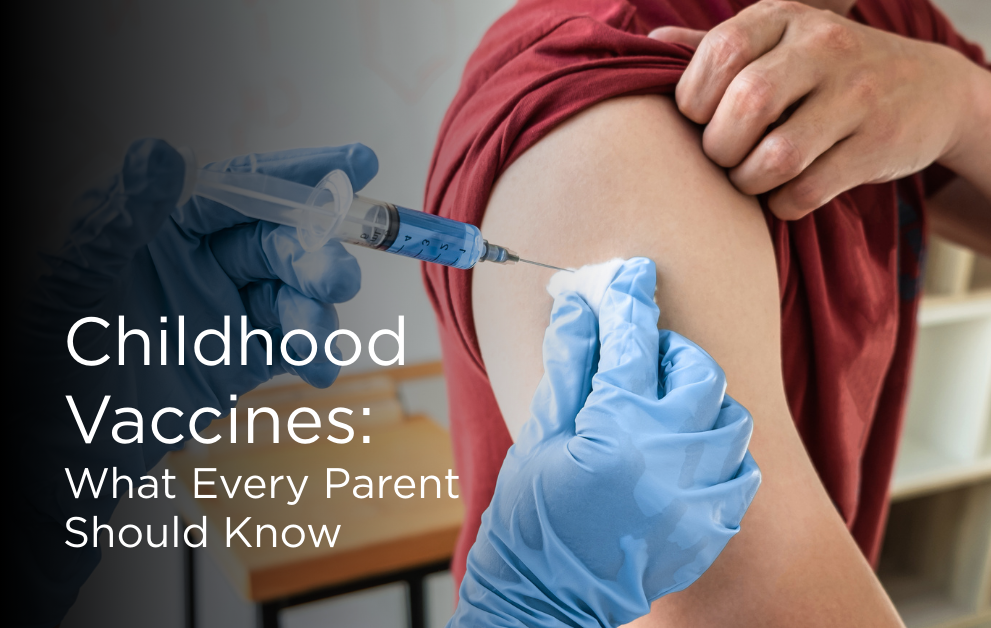
Vaccines are one of the most powerful tools we have to protect children from serious diseases. From infancy, they help build immunity and prevent illnesses that once claimed thousands of lives.
Why Vaccinate Early?
Babies are born with developing immune systems and are exposed to thousands of germs daily—through food, air, and touch. While some germs are harmless, others can cause severe illness. Vaccines help the body recognize and fight these threats before they become dangerous.
At Greater Family Health, we follow the CDC’s recommended childhood immunization schedule, which is designed to protect children when they’re most vulnerable.
Are Vaccines Safe?
Yes. Before any vaccine is approved, it undergoes years of rigorous testing. After approval, agencies like the FDA, CDC, and NIH continue to monitor safety through systems like VAERS and V-safe.
Most side effects are mild—such as fever, tiredness, or soreness at the injection site—and go away within a few days. Serious side effects are extremely rare and are closely tracked by the CDC. Learn more about possible vaccine side effects.
Common Myths—Debunked
Myth: Vaccines cause autism.
Fact: There is no link between vaccines and autism. The original study suggesting this has been thoroughly discredited.
Myth: It’s not necessary to vaccinate so early in life.
Fact: Many of the diseases these vaccines prevent are most deadly in the very young, which is why they’re recommended at the earliest ages.
Delaying vaccines until children are older simply puts infants and toddlers at greater risk for potentially life-threatening diseases such as whooping cough, measles and diphtheria.
Myth: The vaccine schedule is too aggressive and should be spaced out.
Fact: The immunization schedule is determined by decades of medical evidence showing there’s an optimal window of time when vaccines are most effective in preventing — and children are most vulnerable to — these diseases.
However, many parents feel the CDC’s recommended schedule is too aggressive. So they ask their pediatricians to deliver one vaccine at a time, and at a much slower pace.
Beyond missing that window of effectiveness, spacing out immunizations results in more office visits and more injections. Additionally, as mentioned before, the diseases these vaccines prevent are most deadly in the very young. That’s why they are recommended at the earliest ages.
Myth: Vaccinations cause diseases that they are meant to prevent.
Fact: Vaccines don’t cause diseases, and here’s why: They don’t contain active viruses.
Vaccines are also known as immunizations because they stimulate our immune systems to produce the antibodies “or the body’s army” needed to protect us from — or become immune to — diseases. The inactive viruses in vaccines essentially trick the immune system into thinking there’s a threat so it will churn out those protective antibodies.
Myth: Vaccines contain harmful toxins.
Fact: Vaccines may contain trace amounts of substances like aluminum or formaldehyde, but these are present in safe, regulated quantities.
Myth: The effectiveness of vaccinations has never been proven.
Fact: Simply stated — and scientifically proven — vaccines are extremely effective.
Depending on the vaccine, 95% to nearly 100% of children will develop immunity against the targeted disease.
Perhaps the most compelling proof that vaccines work is history. The number of cases for every vaccine-preventable disease plummet in the years after a vaccine for that disease is made widely available.
Myth: Not vaccinating my child affects only my child.
Fact: Unfortunately, as we’ve seen in recent years, this simply isn’t true.
Ironically, some parents skip vaccinations because vaccines have been so effective in making diseases that once killed thousands of children each year quite rare today. But experts point to recent measles and mumps outbreaks to illustrate the concept of “herd immunity.”
Herd — or community — immunity means having a high enough percentage of people in a population (or herd) who are immune to a disease that that there are few susceptible people left to infect. Therefore, it’s very difficult for a disease to spread.
But these recent outbreaks show that when a population dips below that amount of vaccinated people needed to prevent an illness from spreading, a disease that was nearly eradicated can resurface with a vengeance — spreading quickly and threatening many lives.
Final Thoughts
Vaccines are safe, effective, and essential for protecting your child and your community. By following the recommended schedule, you’re giving your child the best defense against preventable diseases.
Have questions? Talk to your pediatrician or visit the CDC’s Vaccines for Children page.




